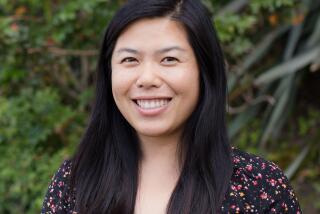Teaching Chinaâs Lost Generation: Foreign Experts in...
Teaching Chinaâs Lost Generation: Foreign Experts in the Peopleâs Republic of China, Tani E. Barlow and Donald M. Lowe (China Books, 2929 24th St., San Francisco 94110: $9 . 95). Members of the generation already had their fair share of lessons by the time the authors traveled to China to begin teaching American literature and history. Born and educated as revolutionaries after the liberation of 1949, they were taught to follow a Soviet model of Socialist economic planning in which central authority and ideology were paramount. Then, when Chinaâs tiny industrial base made a Five-Year Plan impractical, they were taught to reject Communist Party bureaucrats and Chinaâs feudal past. When this brought on widespread disillusionment, older generations strengthened the ties of family, kin and traditional culture--just what Mao had been trying to prevent.
And now, we learn in these pages, young adults in China are reeling from this flux, feeling confused and powerless. But change is once again on the horizon, the authors report; in âan attempt to keep anomie from sinking into anarchy,â young Chinese are integrating old and new, looking to the family for social cohesiveness and to the United States for clues about progress. The authorsâ students now have a âhunger for everything Western (and a need) to believe in America the beautiful.â
Donald Lowe, a professor of history and Marxism at San Francisco State University and Tani Barlow, a postgraduate in modern Chinese history, paint a colorful and unusual, if simply written, portrait of students at Shanghai Teachers College who are trying to come to terms with America. While critical of Maoâs excesses, the authors are somewhat wistful about the promise of the 1960s and wonder if, âin losing the clarity of their Maoist heritage, (the Chinese) have come to resemble us more.â When some of the authorsâ students travel to America near the bookâs end, however, it becomes apparent that they are divided in opinion about the Westâs technological and material abundance: âThe sense of freedom I get when I drive alone,â one student says, âand the sense of hopeless fear when my car breaks down symbolize my feelings about America.â
Screen Deco: A Celebration of High Style in Hollywood, Howard Mandelbaum and Eric Myers (St. Martinâs Press Inc.: $15.95). These sleek, glossy white Art Deco and Art Moderne movie sets from the 1920s and â30s come across much as they were intended: alternately whimsical, grandiose, bizarre and comical. Yet as these authors show, there was more to these sets than met the art directorâs eye. Without engaging in the speculative excesses of many film historians intent on linking film with society, the authors of this unusual collection illustrate how set design revealed American visions of probable and ideal futures. The probable was usually pessimistic, as in Universalâs âThe Black Cat,â which allied evil, symbolized by a Devil-worshiping Boris Karloff, with the cold, sharp, diagonal lines of modern architecture. The ideal, meanwhile, was usually controversial; when audiences realized that film allows one to truly create anew, âShangri-Laâ in âLost Horizonâ--resembling a Hollywood starâs home--seemed lacking in originality. It was a myth, though, to believe that these films were prescient in the first place, for the smoothly curved walls and neat, towering colonnades werenât premonitions of âStar Warsâ but a singular minimalist style from which real visionaries couldnât stray.
Metro-Goldwyn-Mayer, for instance, gave celebrated designer âErteâ a reproduction of his studio in France, French-speaking secretaries and a limousine--but no artistic freedom. The authors never explore how the minimalist style could have become so popular in an era when old money clung to Tudor, Spanish Revival, Colonial or Beaux Arts. They do suggest, however, that Art Deco captured new, exciting notions of power, energy and speed. And when the excitement of technology dissipated with the 1930s reality of Depression, âHollywood,â the authors write, âkept the Gotham myth aliveâ with movies glorifying skyscrapers even while suggesting that they encouraged indecency: The more modern the apartment, the authors write, the more adultery was committed.
A Bell Ringing in the Empty Sky: The Best of the Sun, Volume II, edited by Sy Safransky (Mho & Mho Works, Box 33135, San Diego, CA 92103: $12.95). Now that more and more magazines seem to be celebrating and scrutinizing the rich and powerful rather than thoughtfully surveying real peopleâs hopes and concerns, small presses have become essential for color and perspective. One of them, âThe Sun,â a âmagazine of ideasâ published monthly in Chapel Hill, N.C., deserves special mention, not only because it has published this second volume of subtle, sometimes mystical essays, but because it goes directly against the tide: Rather than personalize the political (focusing on a candidateâs childhood blunders, for instance), âThe Sunâ illuminates the political and philosophical dimensions of the personal (Sy Safransky hopes his journal will âhelp us awaken from our clouded dream of fear, embrace human contradictions, honor our inherent innocenceâ). Safransky is risking it with lofty goals, writing that is occasionally rough around the edges and a solemn overriding theme (coming to terms with death), but this anthology never disappoints, alternating whimsical essays with soulful contemplations and tying the pieces together with a New Age philosophy that, while sometimes flaky (âprisons are like ashramsâ), is often appealing, as when one contributor visits his fatherâs garage, a place where things had been stored and taken away as sons and daughters grew up, and envies the Zen-like inertia of the structure, âthis yoga of wood and metal tightly joined. Of things held down by nuts and bolts.â
More to Read
Sign up for our Book Club newsletter
Get the latest news, events and more from the Los Angeles Times Book Club, and help us get L.A. reading and talking.
You may occasionally receive promotional content from the Los Angeles Times.







